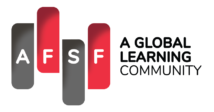012 VENICE BIENNALE
Economic Development by Proxy
Posted on: August 13, 2012
By DOUGLAS BURNHAM
In 2010, amid the severe economic downturn, San Francisco’s Mayor’s Office requested proposals for temporary uses on city-owned vacant lots as a way to spur economic development within a neighborhood marred by a 10-block-long linear void created when the earthquake-damaged Central Freeway was removed. In an early discussion with city officials, I remember thinking, “OK, they’re asking for free design work and we have to fund the implementation. … What can possibly come from that?” Not only would we need to put forward a compelling idea, but we would also have to realize it financially, as undercapitalized young architects in the middle of a recession.
Yet we bit, motivated by the possibilities of transforming under-imagined territory. We hypothesized compelling temporary uses, sought out prospective vendors, developed design strategies that utilized low-cost, easily deployable modules, and built coalitions with neighborhood groups, local business owners, and city officials. Within nine months our first vendor, who uses liquid nitrogen to make ice cream and until then had operated out of a red Radio Flyer wagon, opened for business on a formerly derelict parking lot.
In many ways, our efforts were driven by sheer will and risk-taking. Banks weren’t loaning money, so we took out a six-figure personal loan from a supportive client to fund the site’s required infrastructure. Inventing as we went, we used our skills as architects to rethink the rules of development. We phased the project, rolling out successive elements (ice cream and coffee vendors, an arts institution, a beer garden, bike rentals, and, currently, retail components) as each became feasible, over the course of our five-year lease. Each phase has its own business model and each model has to grapple with the cold reality of an ever-diminishing timeline for recouping improvement costs for ourselves and our vendors.
We named our project “proxy” because it is intended to be a placeholder for a more permanent development. Like other spontaneous interventions, proxy adopts an implementation model of lighter, faster, cheaper—but it also builds value and transforms the neighborhood by changing the perception of place and creating compelling content where there was none before. The project shows how incremental, place-based change can encourage entrepreneurial activity and community participation—despite economic obstacles—by establishing a framework to promote local micro-enterprises. This model lowers the economic barriers to entry, making it possible for new small businesses to participate in these temporary uses and demonstrating that goals for economic and cultural development need not be mutually exclusive, but together can be powerful catalysts for urban revitalization.
As we look ahead, we see continued economic uncertainty across the globe. Spontaneous interventions offer cities a strategy for remaining not only economically viable, but relevant—able to adapt to the rapid changes advanced by contemporary culture. To be successful, however, certain conditions must be met. There must be developers who support creative initiatives that enhance the cultural and economic value of place; arts, urban advocacy, and placemaking philanthropic groups who align their efforts to promote the cultural benefits that these interventions create; and economic development measures that offer incentives for temporary uses of underutilized spaces. These experiments also require designers, developers, philanthropists, and city agencies who operate beyond a bottom-line mode of thinking and consider the creation of places of quality and diversity within the city as a higher calling. This ethic of flexible urbanism extends beyond the deployment of vendors in mobile containers to urge thinking about the city as a vibrant, living construct that is constantly in the process of becoming.
Douglas Burnham is principal and founder of envelope A+D, a San Francisco Bay Area architecture and design firm whose work reconceptualizes modes of living and building in ways that advance new models of public and private space. Proxy, featured in Spontaneous Interventions, was awarded Best Building in 2012 by the Architectural Foundation of San Francisco for its strategy of activating underutilized spaces in the city.
